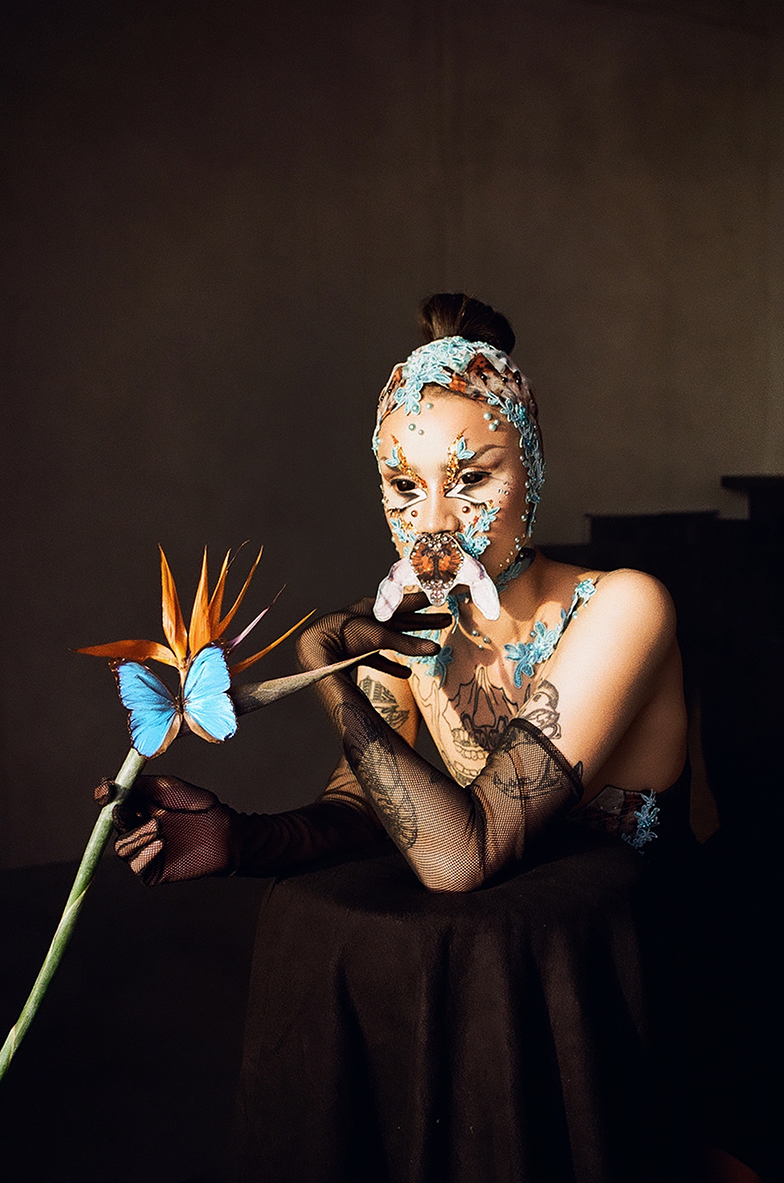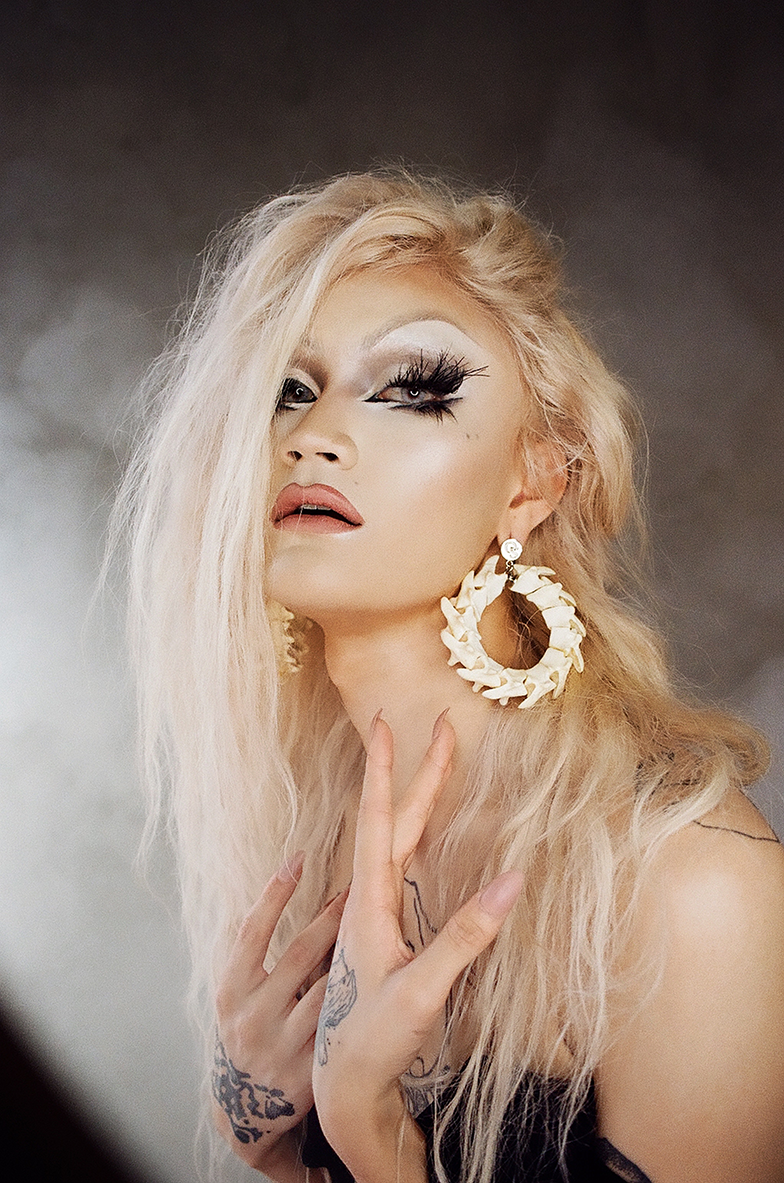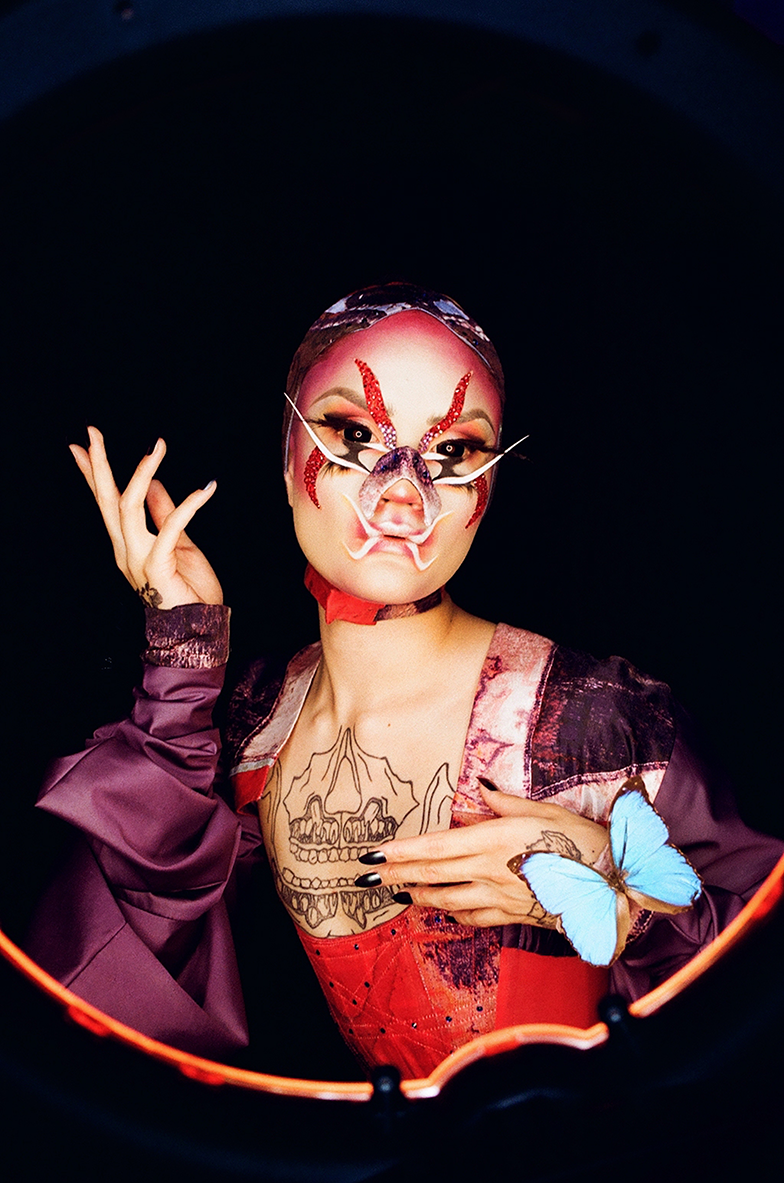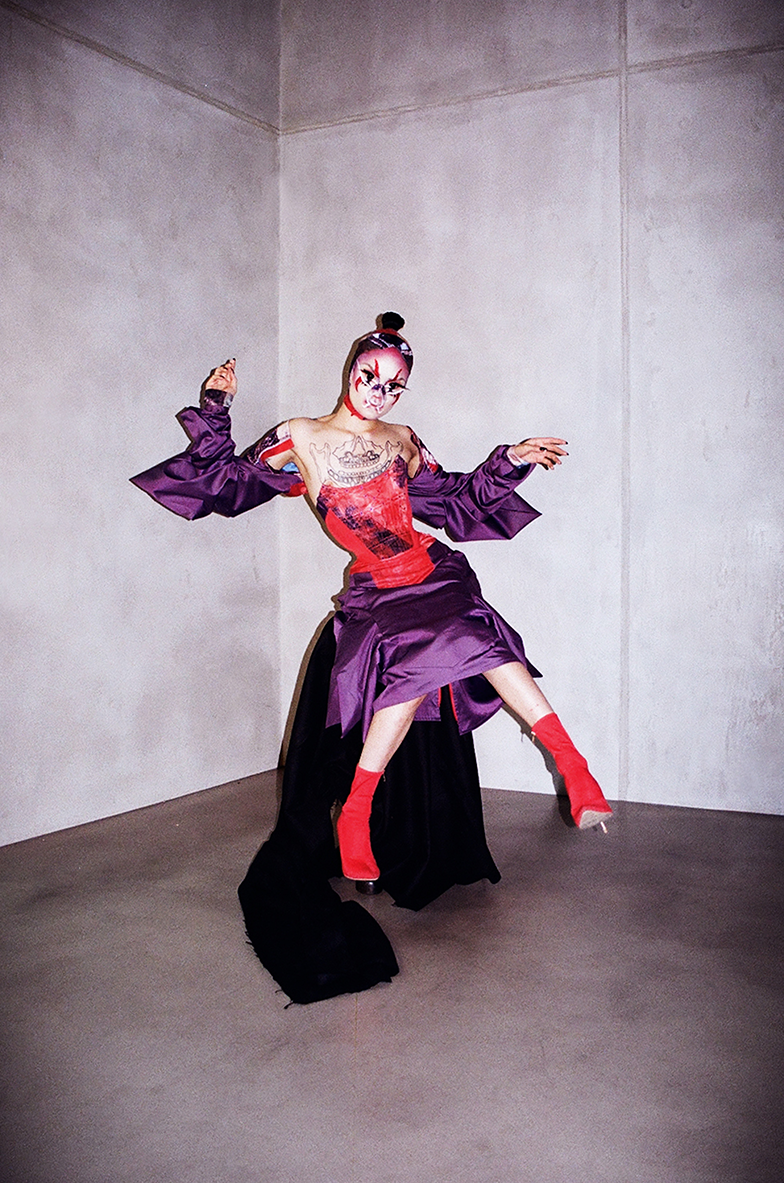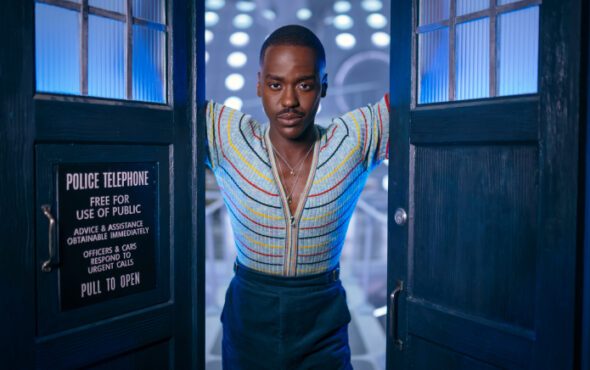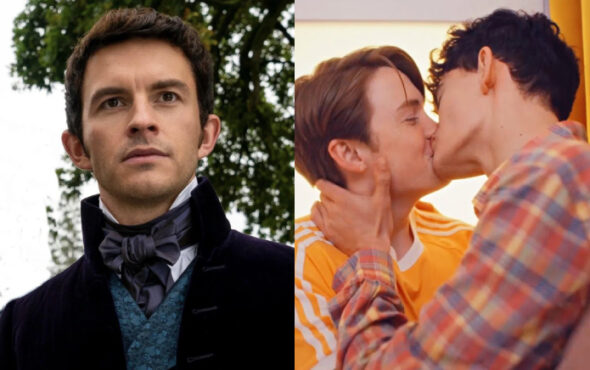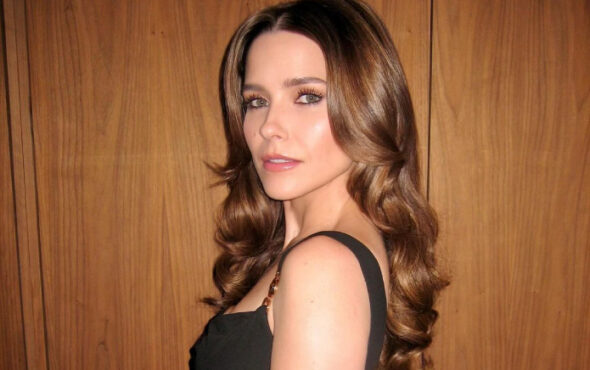
“RuPaul’s Drag Race is generally quite dangerous at this point,” Berlin-based drag performer Hungry tells us. “It gives this perception of how drag is supposed to be and how people’s skills are viewed.”
The makeup artist and designer – who currently boasts over 300,000 followers on Instagram – admits (after we pushed for an answer) that a future appearance on RuPaul’s Emmy-winning series is unlikely because of the negative impact it’s had on some of its contestants. “The queens that leave the soonest are considered bad at drag, when it comes down to it. Just because they weren’t good TV, or they couldn’t adapt to what this reality TV programme is about. It becomes really dangerous because it is bad for their career, and for a lot of them, it turns into somewhat of a curse. It doesn’t leave them.” She continues, during our inevitable Drag Race-related section of the interview: “Of course, the network wants to bring good TV, but then it also should take care of what the queens take home with them, and it’s a great programme, but it could teach a bit more about the aspects of drag. I’m happy I’m not involved, but I also wouldn’t mind being involved if it changed.”
It may seem like Hungry harbours some negativity towards the show, but nah. We opened with a controversial quote to pull you in, because that’s what we do. In fact, Hungry loves Drag Race, and credits the series with opening doors for the art-form, as it’s the “one commercial focal point of drag”. “I started drag long after Drag Race aired. I watched two seasons and thought, ‘This is quite entertaining’, then I watched all of them! I saw the different aspects that it was showcasing, so it definitely changed the public view on drag. It made drag more of a career option.”
In Hungry’s home country however, that’s not the T. While Germany is seen as a bastion of creativity and individuality, drag is still not seen as a legitimate, money-making career. “It’s not great if you wanna make a living out of a creative field,” she explains. “For that, you really have to market yourself elsewhere.” Despite this, Berlin is home to one of the most diverse, innovative drag scenes in the entire world. Yes! The entire world! Queens may not develop massive careers, but they do develop avant-garde characters that expand far beyond “pageant drag or Americanised drag” that we’re so accustomed to on our Instagram feed. “It’s quite rare to see that here. There’s a few pageant queens here, but it’s mostly personal style. It’s people who go into very specific fashion history, or runway themes, and then there’s people who are totally going into theatre and not really using it as drag.”
But while the city is “accepting as a whole”, Hungry says it’s not exempt from the pressures of conformity that are rampant throughout the community. “For making a living off drag and performances, it might not be as appreciative as other countries or other cities. A lot of people are really thrilled by the idea of Berlin, thinking it would be this really great, creative scene overall, but it’s very split,” she reveals. “The parties in Berlin are great, but they’re only great if you’re into masc, techno nights with a lot of drugs. For that, it’s perfect.” Disappointingly, she adds: “But for more of an entertainment night, a performance night, it’s quite hard to look for, especially in drag and that sense. There’s a couple other scenes, like there is a Burlesque scene that has shows now and then, but everything is still on a small scale. There’s one weekly show we have, but it’s also not a huge one. Everything except for techno is trying to make a name for it.”
It was her move to London – and the explosion of Drag Race – that encouraged Hungry to pursue it as a job. “I found London a bit more open to it. I realised that there was a career in it, and that it’s seen as more of a commercial entertainment field, when it really isn’t in Berlin. Before, it just had been this thing that I would do next to studying fashion design, with the goal in mind to still work in fashion.” She adds: “For me, it’s good because I tour and make my money with touring, and make my money in the UK, but Berlin itself doesn’t hold a lot of jobs for me.”
And while many drag queens opt for a ‘fishy’ pageant lewk, Hungry’s appeal lies in her sickening, avant-garde concepts and creations. Her eye-popping aesthetic – which Hungry describes as a “personification” of her “creativities and fantasies” – came to fruition as a hobby, and continued because she loved the attention when she went out. “It wasn’t really a passion. I went with the reaction, because people were really into it, so I thought, ‘Why not? I have time’. I then got the opportunity to perform in Berlin on a frequent basis, so I started working on my character. It was never an immediate decision to do it, it was convenient, and I had time. People were supportive of it, so I was lucky in that regard.”
But where did this inspiration come from? “It differs. It’s still coming from the fashion aspect of things. I sometimes just see a fabric, and I’m already making it up in my mind, being like, ‘Okay, I can make this look, I can make this character’.” Unlike other drag performers, Hungry has a whole repertoire of characters at her disposal. In our shoot, she unveils the fish, the femme, the pageant queen, a side which fans will be gagged to see, and if you check out her Instagram, you’ll understand why. “I went with a femme look, because that was the only thing in my mind that would be a surprising thing for me. It was definitely fun to do, to be full femme for a day!”
“The parties in Berlin are great, but they’re only great if you’re into masc, techno nights with a lot of drugs. For that, it’s perfect.”
This surprising new character stems from the performer’s constant need to find “new things”. When she went on tour this summer, she found herself showcasing older pieces she’s previously worked on, which didn’t excite her and left her exhausted. “I’m so used to delivering things every week, and I had done that until the beginning of this year. I’d always been posting weekly. Then this year, I took a step back because I knew that I would have to tour a lot, and could only post proper shoots. Now, I know it’s okay to step back, go for quality over quantity. It’s better and healthier for me.”
Because Hungry originates from Bavaria – which is known for its unique culture and conservative traditions – we had to ask, ‘Who were your role models growing up?’ Unsurprisingly, she didn’t have many because “nothing really happened in a creative or queer field.” However, she credits the iconic comedy-horror musical Rocky Horror Picture Show with opening her eyes to the queer outside world. “Then I discovered more queer, creative films with interesting character designs,” she explains. But later on in Hungry’s life, when she worked on her dissertation, she realised that her vision resembled Australian performance artist and fashion designer, Leigh Bowery, whose creations were known for shocking audiences. “Leigh Bowery had the most relatable approach to things, by being in fashion but not really being in fashion, and he was on stage but created his own niche within the nightlife. He had the same approach that I have, to keep making things but never wanting them to go into production on a commercial level, because he knew that he would be the only one who would actually have the presence and skill to portray them in the right way.”
Thankfully, Hungry’s talent doesn’t stop with her aesthetic. With her live performances, she aims to entertain – just like any queen – but more importantly, she aims for a reaction. “There are different moods, there are some performances which are for a fun gay night out, and then there’s some where I really want to break the mood of the night and turn it into something more serious, or maybe something more thoughtful.” Her favourite shows feature a dramatic storyline, some of which have garnered an emotional response from the audience members. “I had someone come up to me and say, ‘I almost cried over this’. That’s the best reaction that I can get from a number.” But if you’re going to a Hungry show (and you should, because they are fierce-as-fuck) don’t expect it to be that hard-hitting every time. She can dance, she can burlesque, even though she stands “less behind those numbers”. “I always wanna deliver a story and feel out some things within the audience that they can relate to, if they can, because it’s usually linked to myself.”
So where does Hungry see herself in a few years? It’s always a cliche – but necessary – question to ask. Where does one go after creating avant-garde perfection, embarking on a worldwide tour, and working with Icelandic icon Bjork? Oh yeah, we forgot to mention, Hungry’s worked with Bjork. Surprise! The two collaborated on the eclectic musician’s acclaimed ninth studio album, Utopia. If you’re a fan of Bjork – and if you’re not, burn our magazine because we don’t want you reading it – then her vision for the artwork will make total sense. Hungry tells us: “It’s an ongoing collaboration. It’s a very great environment to be creating in, everyone’s open to new things and everyone’s understanding of each other’s ideas. It’s been incredibly humbling to work with them.”
So, as we were saying, where do you go after all that? “I’d like to keep working on the character, finding different facets of it and trying to keep creating around it,” she reveals. “In the long run, I think about archiving everything and having some sort of retrospective about my pieces. There’s a lot of objects around the things I do, it’s not just about the outfits. There’s masks and accessories, that I would like to see exhibited at one point, and that’s the vague idea that keeps me going. I wanna keep finding new ways of expressing myself.”
That’s a nice line to leave it on isn’t it? Well we’re not done. Hungry wants to stress – and for good reason – the amount of work that goes into drag, because honey, it ain’t no 9 to 5. “There’s so much work going into it, and I’m not even doing all of it. I don’t wear hair, but whenever I wear hair I have it made – because I have no idea how to wear hair – and I have a person to do my visuals for the performances because he’s a 3D artist.” She continues: “Back when it was a hobby, I didn’t care about it much. But once I started actually putting my creativity into it, it then became my baby. So now it’s very serious to me, because it’s kind of all I have.” So if you truly appreciate the art of drag, don’t just support your favourite Drag Race contestants. There’s a whole tucking world of queer performers and drag artists out there. Branch out, explore.
Photography Joseph Wolfgang Ohlert
